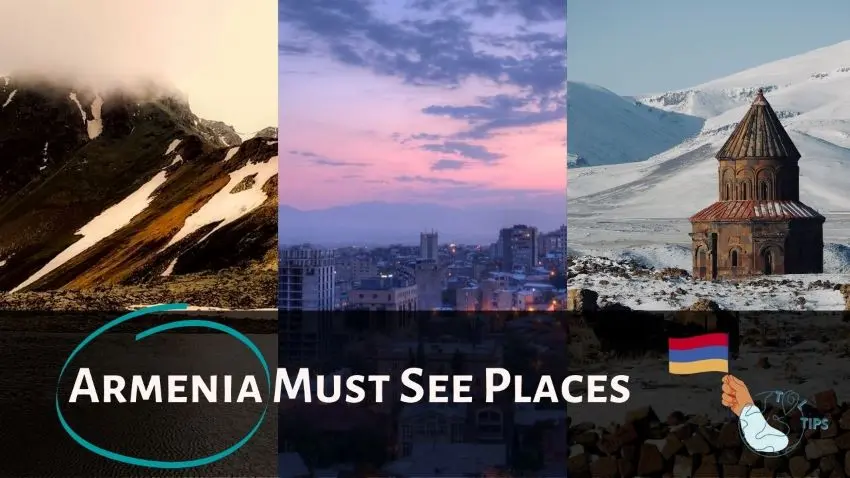
Armenia Must See Places for First Time Visitors
Insider tips by a local guide on what to see during your first visit to Armenia

by Anahit Sargsyan
Caucasus Region Local GuideHonoured to show all the secret places and culture in the Caucasus
Visit Armenia and Get Surprised
Visiting Armenia may not be on most travelers’ lists but the truth is that this Caucasus country has a lot to offer and might surprise you for such a not-so touristic destination.
Traveling in Armenia is easy and safe, and as such, it is a great travel destination (actually, safely similar to Georgia)
Armenia does not have great attractions per se, but as a whole, it is a beautiful travel destination, full of nooks and crannies to discover.
Local Guide Tips
Tips for first time visitors, whether traveling alone or in groups. From a local guide that knows the Caucasus region very well and shows it to tourists for decades.
When to Visit
The best time to travel in Armenia is during the dry months, usually between May and September. However, Armenia is an excellent travel destination all year round.
Winters are not very cold, and although snowfall can occur, it is not very frequent. Expect it to be hot during summer, especially in July and August, but not as hot as in Algerian desert regions.
Which Season to Visit Armenia? And What to Do?
- ☀️ Summer: The temperature during the summers in Yerevan can reach 40 degrees Celsius and the air is usually thin, so it is advisable to go north and enjoy outdoor activities in the mountains.
- 🍂 Autumn: Best period to visit the country with more pleasant temperatures to visit Yerevan and the rest of the country.
- ❄️️ Winter: The weather in Armenia during winters is usually cold, with temperatures that can reach -10 degrees Celsius, even more in the higher areas and roads can be cut by ice and snow.
- 🌱 Spring: Most of Armenia’s territory is above 1000 meters. Rain is usually present in early spring, and the countryside is usually quite flowery, making this period perfect for hiking.
As such, traveling in Armenia can be a nice option for those smaller vacations that don’t have time to visit very large countries. If you want to take advantage and travel in Armenia by adding Azerbaijan, Georgia, and Nagorno Karabahk (not advised currently due to political instability), then you will need more time.
Documents to Visit
Armenia’s visa policy is quite easy and allows about 60 nations to enter the country with a free visa for up to 6 months.
Holders of around 60 countries are eligible to apply for a visa on arrival. It will allow you to stay in the country from 21 days to 4 months, depending on your country of origin. Armenia also offers online visa services and it is possible to apply for visas at all Armenian embassies worldwide.
Depending on your origin country, you might or not need a visa to travel to Armenia. But you do need a passport valid for a period of 6 months. You should take photocopies of your passport with you because of the authorities.
Areas to Stay
Preferably, select Yerevan as your base in the country.
It is possible to visit the best of Armenia when staying in Yerevan. From there, you can go on excursions, or travel by car to get to know the country.
Getting Around Armenia
If you want to get to know Armenia well, public transportation won’t be enough.
By Car
Renting a car will be your best option. But be aware that most of its roads are in bad condition… full of potholes and many dirt roads. Be careful, there are many gas stations that do not accept credit cards. Always have cash with you.
Armenia has closed borders with Turkey and Azerbaijan. You can only cross borders with Georgia, Iran, and Nagorno Karabakh (not recommended currently).
By Public Transportation
Public transportation in the country mainly connects the cities and does not go to the monasteries or most places of interest.
If traveling in Armenia by public transport, the best option to see the sights is to establish two or three bases and from there take tours or get a taxi (which is really cheap) to see the more inhospitable places.
By Taxi
If you hire a taxi for a day, several days, or a moment, do not forget to negotiate in advance if there is a taximeter or the total price, including round trip, waiting time and maintenance of the cab driver (food and lodging). In Yerevan, in the center, you can see in the most touristic streets the cab drivers offering day trips, on posters with pictures on top of the vehicles themselves.
From Yerevan you can find shared cabs that stop at several monasteries in the north (Sanahin, Haghpat and Akhtala) on your way to Tbilisi.
Yerevan Metro
Very cheap ticket prices for a system that has all the traits you can find in other metros of former Soviet nations.
The endless escalators, the tokens serving as tickets, the booths with the babushkas before the platforms, and the policemen watching and warning anyone trying to film or photograph.
Money
The official currency of Armenia is the DRAM. ATMs are relatively frequent in large cities, but rare in small towns and bus stations. You can also use MB or the most known credit card issuers. As of today, the exchange rate was 1 USD = 455 Dram or 1 EUR = 474 Dram.
The cost of living in Armenia is low. Lower than some Eastern European countries.
- A double room is about 20 USD and a bed in a hostel is about 6 USD/night.
- Meals in local restaurants can cost around 7€/person and eating out is easy for around 3€/person.
12 Best Places To Visit in Armenia For a First Trip
Prepare to Visit Unexplored Beautiful Places
During the multiple local tours I’ve done in Armenia doing local tours, I ended up showing more places than initially planned. And that’s because the country still has many things that are on the way to the most popular attractions that I find interesting and undiscovered.
Many of these places hardly feature on travel itineraries.
And that’s one of the main reasons why Armenia is starting to get more tourist attractions. Visitors want to explore and visit unspoiled places!
There is a lot to see. But if this is your first trip, here are some must-see places.
1. Yerevan, the Capital

Yerevan is a large city and even though it hasn’t major attractions, it has some places of particular interest.
You can visit the Armenian Genocide Museum, with an excellent exhibition based on photos, texts, and films that portray the genocide of the Armenian population at the end of World War I, which resulted in the death of hundreds of thousands of people.
Its mosque is also worth visiting and a good place to rest from the summer heat.
2. Khor Virap Monastery

Khor Virap is one of the most iconic monasteries in Armenia, with a spectacular location in Mount Ararat.
Inside the monastery, you can visit the main church, and one next door is the well where Gregory the Illuminator, the first patriarch of the Armenian Apostolic Church, was reportedly held prisoner for 12 years.
You can sense a sort of mystique feeling in this place. There was once a temple to a pagan goddess before Christianity gained ground.
Ideally, if you can preview it, choose a day without fog, which can be intense during the summer months.
3. Tatev Monastery

Tatev is the most famous monastery in Armenia, with the largest cable car in the world.
It is located between several gorges embedded in the Tatev plateau, where the monastery of the same name stands.
It is the most emblematic in the country because of its geographical position in a very remote but scenic place.
Unfortunately, depending on when you go there, the number of tourists and its reconstructed appearance take away some of its charms.
The cable car ride is overwhelming. Tickets are by appointment, and when you get there you have to wait, and take the opportunity to have lunch in the cable car restaurant.
4. Saghmosavank Monastery
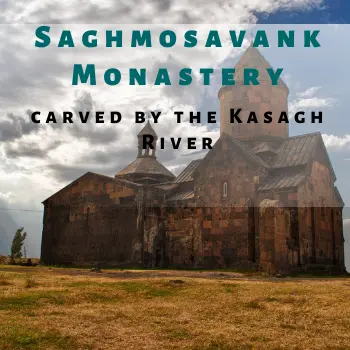
The Saghmosavank monastic complex is located facing a spectacular rugged valley, carved by the Kasagh River.
The interior of the church, with its dome, and its exterior thus competed for our attention.
5. Kasagh River Valley
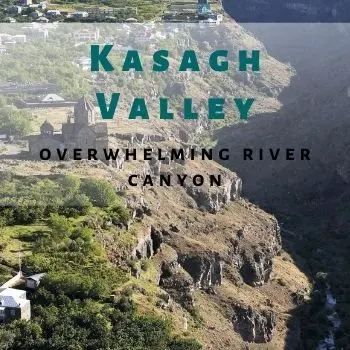
The Kasagh River Valley is especially magnificent between Kushak and Ashtarak, with a deep and overwhelming river canyon.
The back of the Saghmosavak monastery is one of the best places to appreciate its grandeur.
6. Echmiadzin
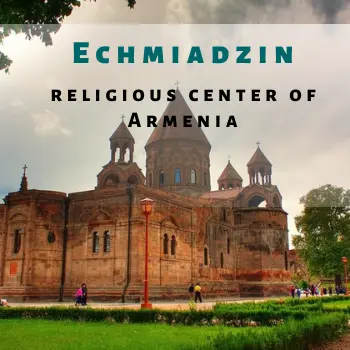
The Echmiadzin complex is the religious center of Armenia. It is where the power of the country’s Church is located, with study institutions and ancient and modern churches.
The oldest church was undergoing restoration when we visited, so we couldn’t get a full picture of the complex. However, it was interesting to visit yet another place symbolic of the first nation to convert to Christianity.
7. Meghri
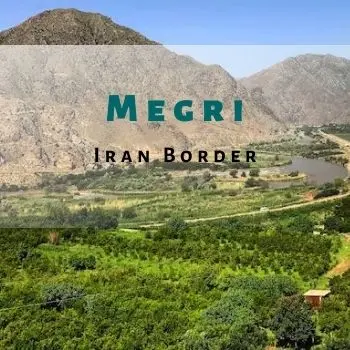
Meghri is a small frontier settlement on the border of Armenia and Iran. If you have a car, travel along the marginal road.
The river canyon that separates the two countries is overwhelming.
8. Sanahin Monastery
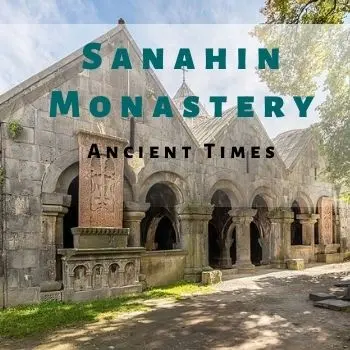
Armenia was the first nation in the world to convert to Christianity in the early 4th century, and even today this ancient tradition is still felt in the national identity.
Some nearly thousand-year-old monasteries are a source of national pride and attract tourists from home and abroad.
The Sanahin monastery is full of tombstones, tombs, and decorated stelae. It is located in the northern part of Armenia, near Haghpat and the city of Alarvedi with a gigantic and polluting copper industry.
9. Lake Sevan
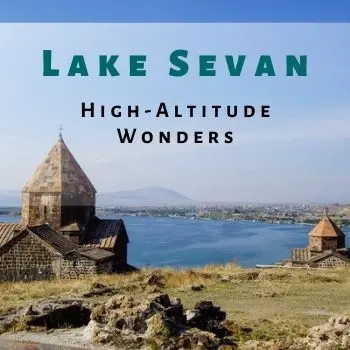
Lake Sevan is a high altitude lake near the border with Azerbaijan.
By Lake Sevan, the people are engaged in herding, fishing, and farming.
10. Yeghegis Valley

The Yeghegis Valley is one of the most beautiful mountain landscapes in Armenia. The whole valley is wonderful but especially the climb to the Selim pass (2410 m) is wonderful.
Before the pass, there is an old caravanserai, the Selim Caravansarai, an inn from the golden times of the Silk Road.
11. Noravank Monastery

The Noravank Monastery is located to the south of the country and towards Lake Sevan.
It’s not easy to get there but it’s worth it, not for what’s inside but for its magnificent position in the valley.
12. Haghpat Monastery
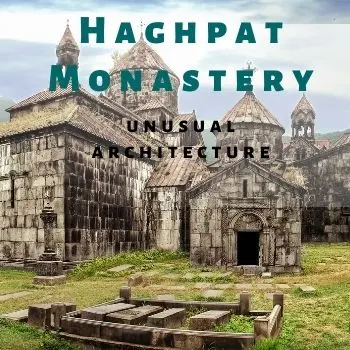
The Haghpat Monastery stands out for its location and the beautiful set of buildings, with unusual architecture and several funerary stelae (khachkars) with beautiful representations of Christian crosses.
Inside one of the churches, the acoustics are phenomenal.
